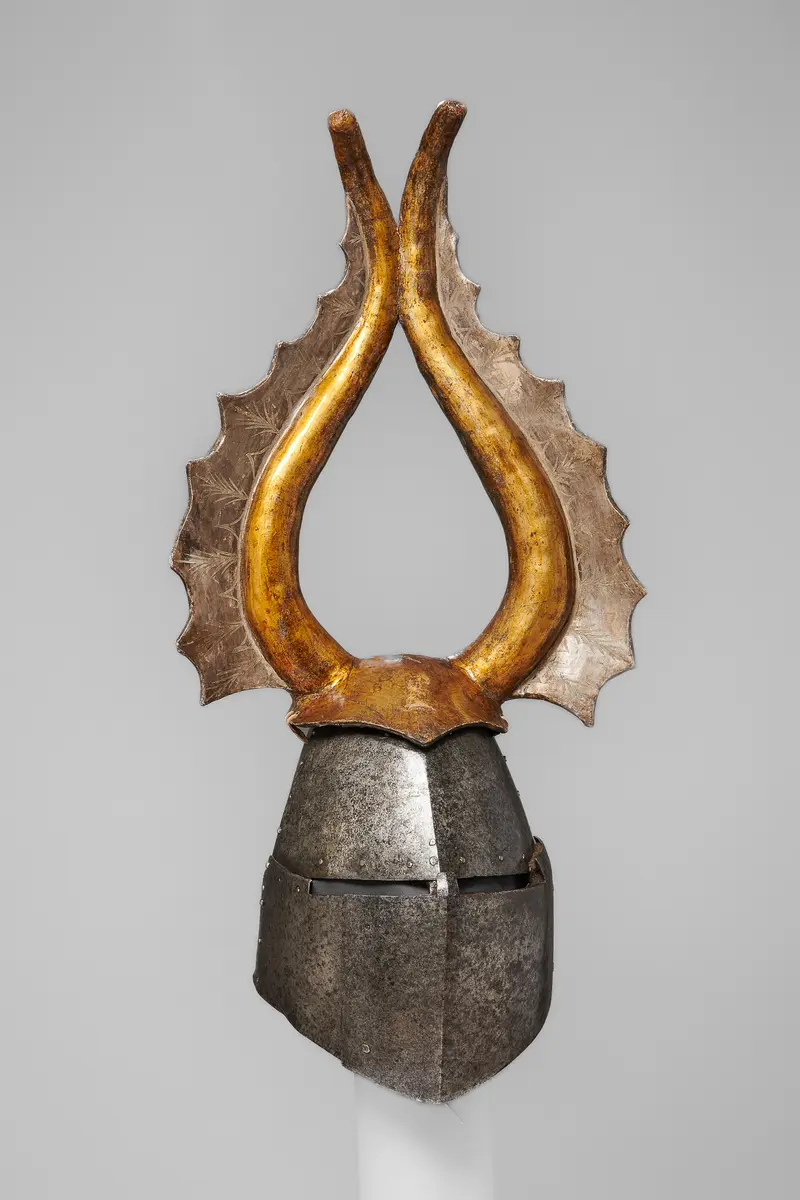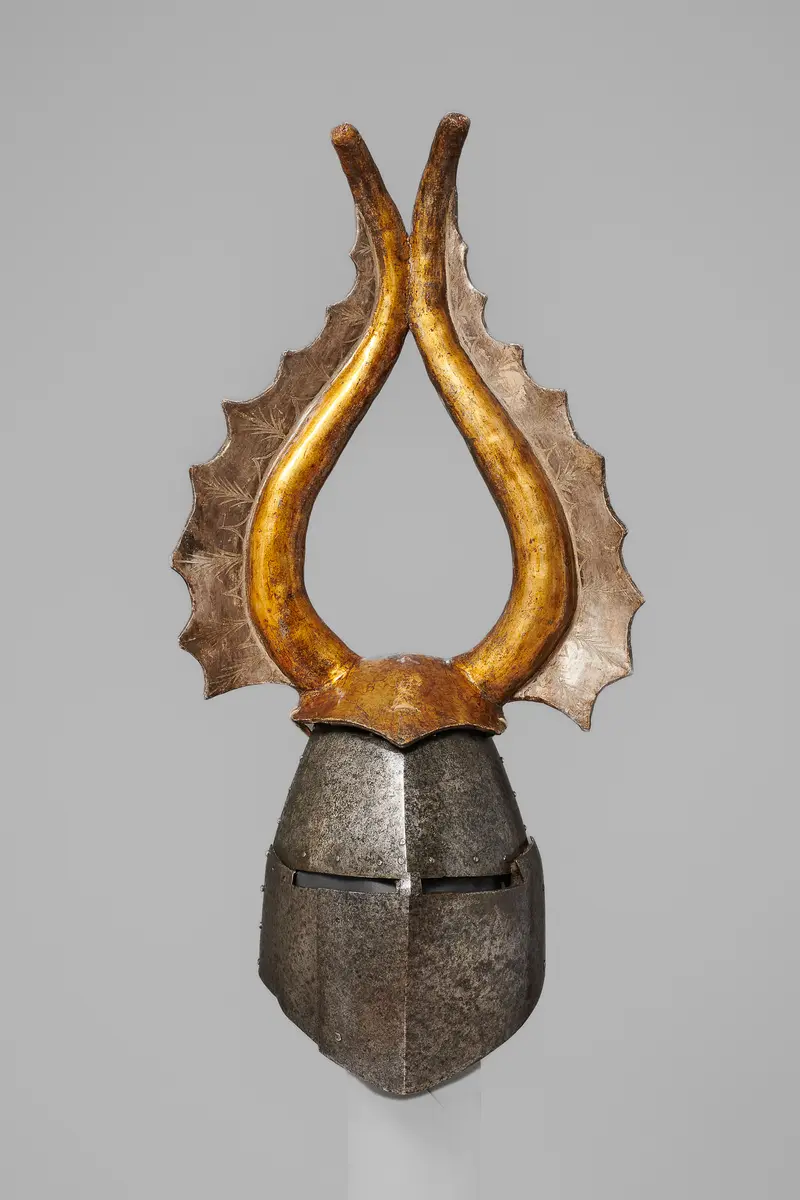Besitzer/in:
Albert von Prankh (um 1350)
Zeit:
ca. 1330-1340 (Helm) und 15. Jahrhundert (Helmzier)
Objektbezeichnung:
Prankher Helm
Kultur:
Norditalien/Süddeutschland/Österreich
Material/Technik:
Helm: Eisen, geschmiedet, aus Einzelteilen gebaut. Farbreste. Textil: Filz. Helmzier: Leder. Textil: Leinen. Kreidegrund, blattvergoldet und – versilbert. Lasur.
Maße:
H inklusive Zimier: H 76 cm x B 24,2 cm x T 31 cm
B gesamt inkl. Zimier 40 cm
Gewicht Zimier: 1,01kg
Gewicht Helm: 5,2kg
Gesamtgewicht: 6,21kg
Signatur:
keine
Beschriftung:
keine
Stempel / Zeichen:
keine
Bildrecht:
Kunsthistorisches Museum Wien, Hofjagd- und Rüstkammer
Inv. Nr.:
Hofjagd- und Rüstkammer, B 74

